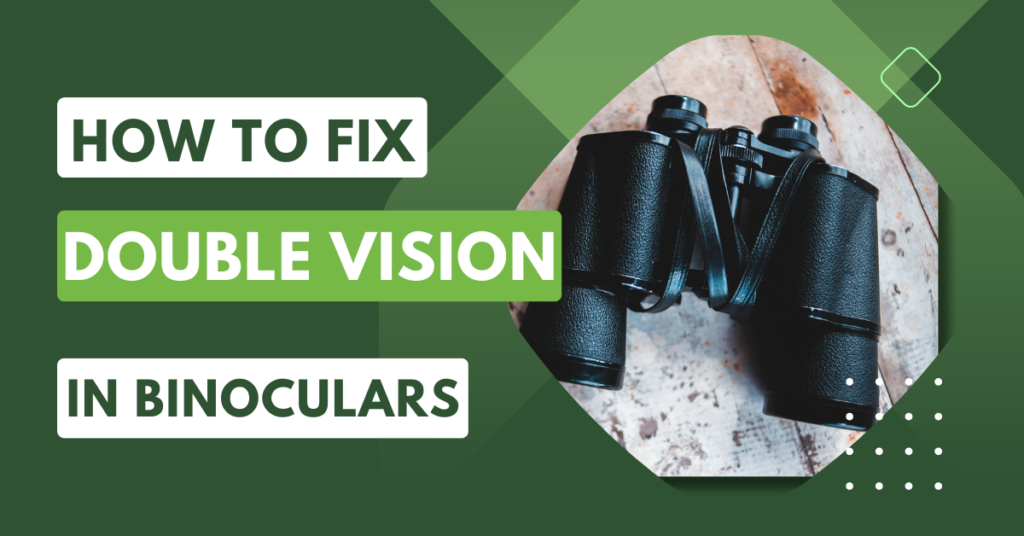Binoculars are invaluable tools for observing distant objects with enhanced clarity and detail. However, occasionally, users may encounter an issue called double vision, which can hinder their viewing experience. This article aims to explore the phenomenon of double vision in binoculars, its causes, and how to effectively address and prevent it.
What is Double Vision in Binoculars?
Double vision, also known as binocular diplopia, is a condition where the viewer sees two overlapping images instead of a single, unified image through binoculars. Instead of a sharp and focused view, the user perceives a blurred and distorted image, making it challenging to observe objects accurately.
What Causes Double Vision in Binoculars?
Several factors can contribute to double vision in binoculars. Some common causes include:
Misalignment:
Binoculars consist of two optical tubes that should be perfectly aligned to ensure a single image. If the alignment is off, the viewer may experience double vision.
Incorrect IPD (Interpupillary Distance):
IPD refers to the distance between the viewer’s pupils. Binoculars should be adjusted to match the viewer’s IPD. If the IPD setting is incorrect, it can lead to double vision.
Optical Issues:
Poor quality or damaged lenses, prisms, or coatings in binoculars can also result in double vision. Any defect in the optical components can cause misalignment and produce a double image.
How to Fix Double Vision in Binoculars
Fortunately, there are several methods to fix double vision in binoculars. Here are two common techniques:
Adjusting the Horizontal Screws for binoculars double vision fix:
- Locate the horizontal alignment screws: Typically, binoculars have screws on the center hinge that control the horizontal alignment. These screws allow you to adjust the alignment of the two optical tubes.
- Make incremental adjustments: Using a small screwdriver, turn the screws gently in small increments, either clockwise or counterclockwise. Observe the image after each adjustment to determine if the double vision is decreasing.
- Test and fine-tune: Continue making minor adjustments until the overlapping images merge into a single, focused image. Be patient during this process, as it may require some trial and error.
Adjusting the Vertical Screws:
- Identify the vertical alignment screws: Some binoculars have additional screws on each eyepiece that control the vertical alignment. These screws enable you to adjust the alignment of the eyepieces independently.
- Make careful adjustments: Using a small screwdriver, rotate the vertical screws gradually, either clockwise or counterclockwise. Monitor the image and assess if the double vision is improving.
- Refine the alignment: Continue adjusting the vertical screws until the two images align perfectly. Ensure that the focus and clarity of the merged image are optimal.
Checking the Image Quality
After making adjustments to resolve double vision, it is essential to check the overall image quality. Follow these steps to ensure a satisfactory viewing experience:
- Verify the focus: Adjust the focus wheel or diopter adjustment (if available) to achieve a clear and sharp image. Ensure that both eyepieces are in focus simultaneously.
- Assess image alignment: Look at a distant object and observe if the image remains single and unified. Pay attention to any signs of misalignment or residual double vision.
- Examine lens condition: Inspect the lenses for any scratches, smudges, or dust particles. Clean the lenses gently with a microfiber cloth if necessary.
FAQs
-
Q1: Can double vision in binoculars occur with all models?
Double vision can occur with any binocular model, but it is more common in lower-quality or poorly maintained binoculars.
-
Q2: Can wearing glasses contribute to double vision in binoculars?
Wearing glasses with binoculars can sometimes cause double vision. Adjusting the eyecups or using eyeglass-friendly binoculars can help mitigate this issue.
Conclusion
Double vision in binoculars can be frustrating, but it is usually fixable with proper adjustments. By aligning the horizontal and vertical screws, users can realign the optical components and achieve a single, focused image. Checking image quality, and lens condition, and practicing preventive measures will ensure a superior viewing experience.
By following these guidelines and promptly addressing any issues of double vision, users can maximize their enjoyment of binoculars and experience the full potential of their optical capabilities.
Also, read Best Rangefinder Under 300 in 2023 – Complete Guide



